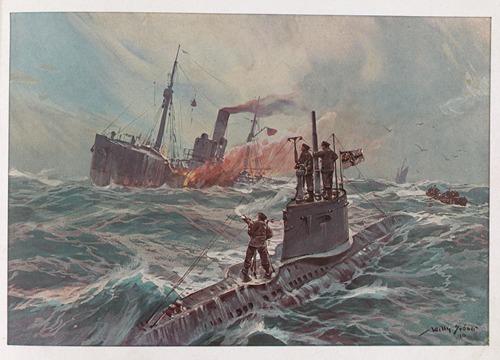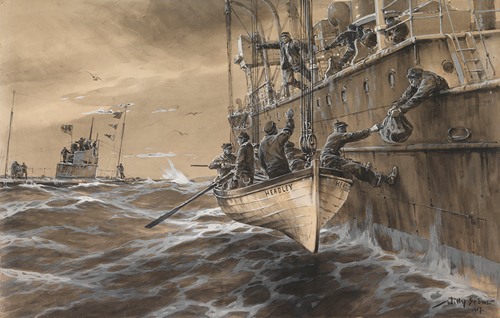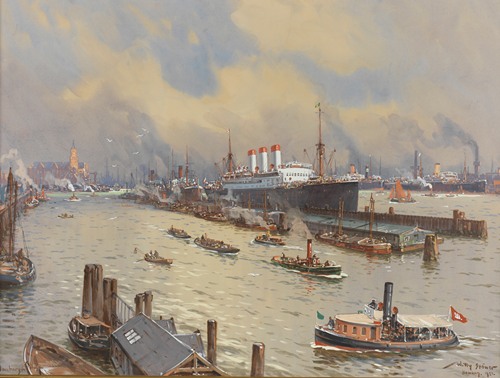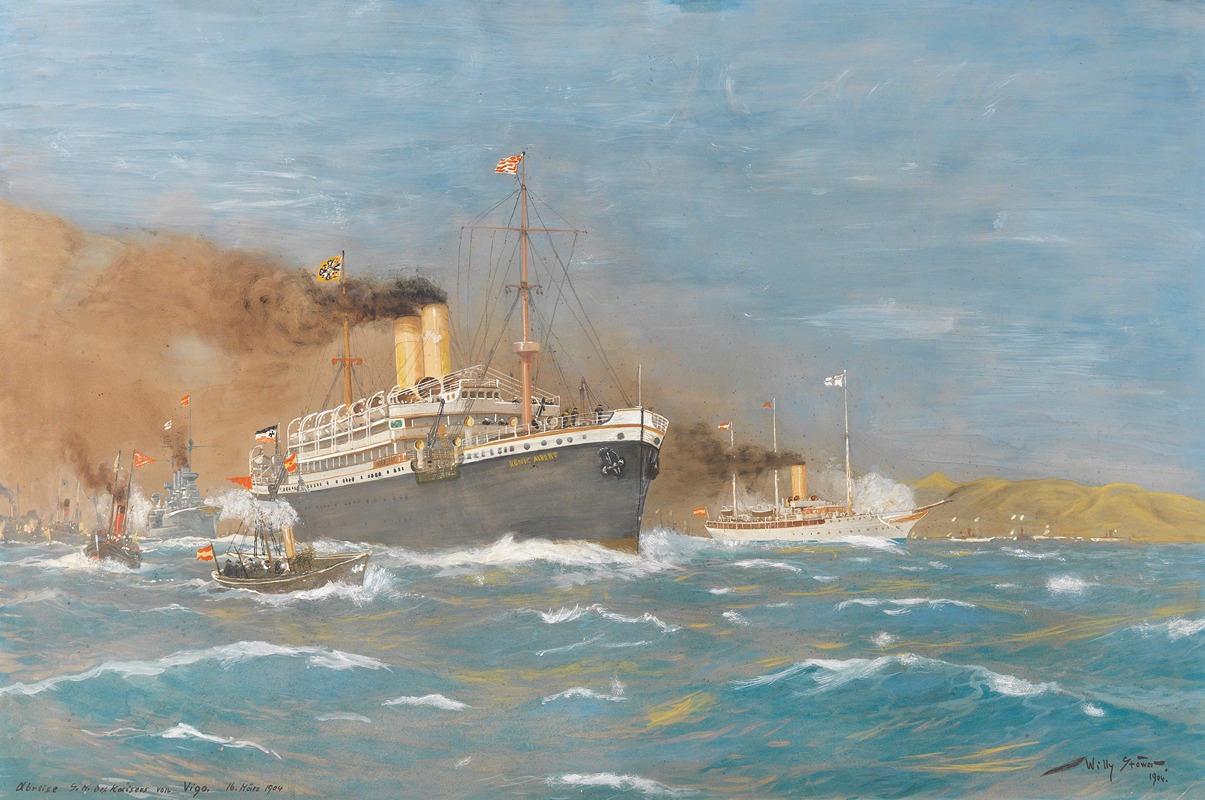
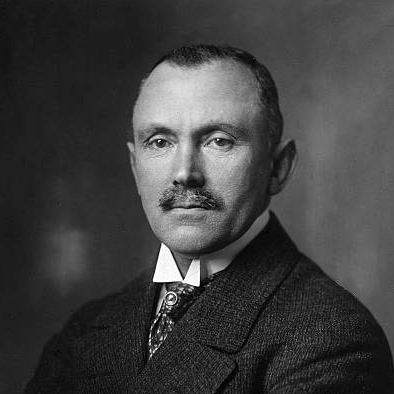
Willy Stöwer was a German artist, illustrator and author during the Imperial Period. He is best known for nautical paintings and lithographs. Many of his works depict historical maritime events such as the sinking of the RMS Titanic in 1912.
Willy Stöwer, the son of a sea captain, was born in Wolgast, Germany on the Baltic coast. He originally trained as a metalworker and worked as a technician in the engineering offices of various German shipyards. He soon received commissions as a draftsman, illustrator and painter. His talent was recognized early and his painting technique was self-taught. In 1892 he married Henrietta Dettmann from a wealthy family, and this allowed him to devote himself exclusively to his work as an artist.
Kaiser Wilhelm II became an enthusiastic supporter and patron of the artist and Stöwer was said to be the Kaiser's favorite naval painter. Stöwer even accompanied the Emperor on several voyages between 1905 and 1912. He was a board member of the German Navy League (German: Deutscher Flottenverein) and was awarded an honorary professorship in 1907. The course of his life then followed that of his patron and the fate of the Imperial German Navy. As with contemporaries such as Hans Bohrdt, his greatest creative period came to an end with the abdication of the Kaiser and the passing of the Imperial era. His later career, being without Imperial favor, relied on a few commissions from steamship lines. He died in relative obscurity at his Berlin-Tegel villa on 31 May 1931, nine days after his 67th birthday. Stöwer is interred in Cemetery III of the Jerusalem and New Churches in Berlin, where the grave remains preserved.
